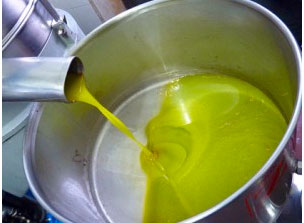 We love good Mexican food in the Salzman household. Soft tacos are a weekly staple on our dinner table (using leftover grilled steak or roasted chicken, sauted with a little bit of onion and garlic), served with fresh salsa, sliced avocado, and if time permits, pickled onions.
We love good Mexican food in the Salzman household. Soft tacos are a weekly staple on our dinner table (using leftover grilled steak or roasted chicken, sauted with a little bit of onion and garlic), served with fresh salsa, sliced avocado, and if time permits, pickled onions.
One of our favorite neighborhood haunts is Monte Alban. Isaac not only eats his entire meal (enchiladas mole), but he polishes off half of Levi’s “Camarones a la Diabla”. We all crave the diabla sauce and if I would let him, Isaac would “lick” his plate clean. We save that behavior for the privacy of our own home!
When ever I find my kids getting bored with my cooking, I ask all of them to list their five favorite meals. Enchiladas always gets a collective thumbs up and is a meal that rarely gets the, “oh no, not that again…I don’t like that anymore”. Enchilads seems like a labor intensive task, but it really isn’t. With a little bit of prep and organization, this meal can be whipped up in 30 mintues or less.

 November is a glorious time in Umbria. The grape harvest has been recently completed, the olive harvest is underway and all the stores and restaurants are trumpeting vino novello and olio nuovo. I was at my local butcher and I asked him the difference between nuovo and novello,because as far as I could figure out, they both meant “new”.
November is a glorious time in Umbria. The grape harvest has been recently completed, the olive harvest is underway and all the stores and restaurants are trumpeting vino novello and olio nuovo. I was at my local butcher and I asked him the difference between nuovo and novello,because as far as I could figure out, they both meant “new”. There are just some things that instantly take me back to my childhood. Sopaipillas do that to me every time. Made by my grandmother, the tender warm pillows of fried dough were sprinkled with cinnamon sugar and drizzled with honey and always disappeared within minutes. She would encourage us to eat them immediately while they were still warm, but it was always said with a wink in her eye – she knew we couldn’t keep our hands off them until there was an empty plate of grease-laden cinnamon-scented crumbs.
There are just some things that instantly take me back to my childhood. Sopaipillas do that to me every time. Made by my grandmother, the tender warm pillows of fried dough were sprinkled with cinnamon sugar and drizzled with honey and always disappeared within minutes. She would encourage us to eat them immediately while they were still warm, but it was always said with a wink in her eye – she knew we couldn’t keep our hands off them until there was an empty plate of grease-laden cinnamon-scented crumbs. The biggest lesson I learned when stepping up from someone who occasionally cooked for herself to someone who cooks for a living is that the quality of ingredients is at the apex of importance. Actually, I think tasting the difference between food cooked with cheap or old elements, and fresh, high quality ingredients is a skill everyone develops whether they cook or not. This past summer I was walking home from the gym and passed a Mr. Softee truck. I was feeling depleted and entitled from my workout and stopped for a van/choc swirl cone- a prized acquisition in my childhood.
The biggest lesson I learned when stepping up from someone who occasionally cooked for herself to someone who cooks for a living is that the quality of ingredients is at the apex of importance. Actually, I think tasting the difference between food cooked with cheap or old elements, and fresh, high quality ingredients is a skill everyone develops whether they cook or not. This past summer I was walking home from the gym and passed a Mr. Softee truck. I was feeling depleted and entitled from my workout and stopped for a van/choc swirl cone- a prized acquisition in my childhood. Rice paper salad rolls are basically salads wrapped in rice paper. You probably already have plenty of salad ingredients in your fridge, but what about Vietnamese rice paper? It's one of those pantry ingredients I've sometimes bought and used once, and then forgot about. And that's kind of a shame because it has a lot going for it. It's cheap, keeps forever and is easy to use.
Rice paper salad rolls are basically salads wrapped in rice paper. You probably already have plenty of salad ingredients in your fridge, but what about Vietnamese rice paper? It's one of those pantry ingredients I've sometimes bought and used once, and then forgot about. And that's kind of a shame because it has a lot going for it. It's cheap, keeps forever and is easy to use.